What must be the current in a circuit if potential difference across a cell is equal to the emf of the cell.
0
10A
0.5 A
105 A
The correct Answer is:A
To determine the current in a circuit when the potential difference across a cell is equal to the EMF of the cell, we can follow these steps:
1. Understand the Definitions:
- EMF (Electromotive Force) of a cell is the maximum potential difference when no current is flowing.
- The potential difference (V) across the cell is the voltage available when the cell is connected in a circuit.
2. Set Up the Equation:
- When a cell discharges, the potential difference (V) across the terminals of the cell can be expressed as:
V=E−I⋅r
where:
- V = potential difference across the cell
- E = EMF of the cell
- I = current flowing through the circuit
- r = internal resistance of the cell
3. Apply the Given Condition:
- According to the question, the potential difference V is equal to the EMF E:
V=E
4. Substitute into the Equation:
- Substitute V with E in the equation:
E=E−I⋅r
5. Simplify the Equation:
- Rearranging the equation gives:
I⋅r=0
6. Solve for Current I:
- Since r (internal resistance) is a positive value, the only way for the product I⋅r to equal zero is if:
I=0
7. Conclusion:
- Therefore, the current I in the circuit must be zero when the potential difference across the cell is equal to the EMF of the cell.
Final Answer:
The current in the circuit must be 0 Amperes.
---
- EMF (Electromotive Force) of a cell is the maximum potential difference when no current is flowing.
- The potential difference (V) across the cell is the voltage available when the cell is connected in a circuit.
- When a cell discharges, the potential difference (V) across the terminals of the cell can be expressed as:
V=E−I⋅r
where:
- V = potential difference across the cell
- E = EMF of the cell
- I = current flowing through the circuit
- r = internal resistance of the cell
- According to the question, the potential difference V is equal to the EMF E:
V=E
- Substitute V with E in the equation:
E=E−I⋅r
- Rearranging the equation gives:
I⋅r=0
- Since r (internal resistance) is a positive value, the only way for the product I⋅r to equal zero is if:
I=0
- Therefore, the current I in the circuit must be zero when the potential difference across the cell is equal to the EMF of the cell.
The current in the circuit must be 0 Amperes.
Topper's Solved these Questions
- BOOK - CENGAGE PHYSICSCHAPTER - SOURCES OF ELECTRIC CURRENTEXERCISE - MANDATORY EXERCISE (Exercise Set III)1videos
SOURCES OF ELECTRIC CURRENT
- BOOK - CENGAGE PHYSICSCHAPTER - SOURCES OF ELECTRIC CURRENTEXERCISE - MANDATORY EXERCISE (Exercise Set IV)9videos
SOURCES OF ELECTRIC CURRENT
- BOOK - CENGAGE PHYSICSCHAPTER - SOURCES OF ELECTRIC CURRENTEXERCISE - MANDATORY EXERCISE (Exercise Set I)4videos
SOURCES OF ELECTRIC CURRENT
- BOOK - CENGAGE PHYSICSCHAPTER - REFRACTION OF LIGHT EXERCISE - OLYMPIAD AND NSE LEVEL EXCERCISES10videos
REFRACTION OF LIGHT
- BOOK - CENGAGE PHYSICSCHAPTER - STATIC ELECTRICITYEXERCISE - OLYMPIAD AND NTSE LEVEL EXERCISES10videos
STATIC ELECTRICITY
Similar Questions
(a) Find the potential difference between A and B
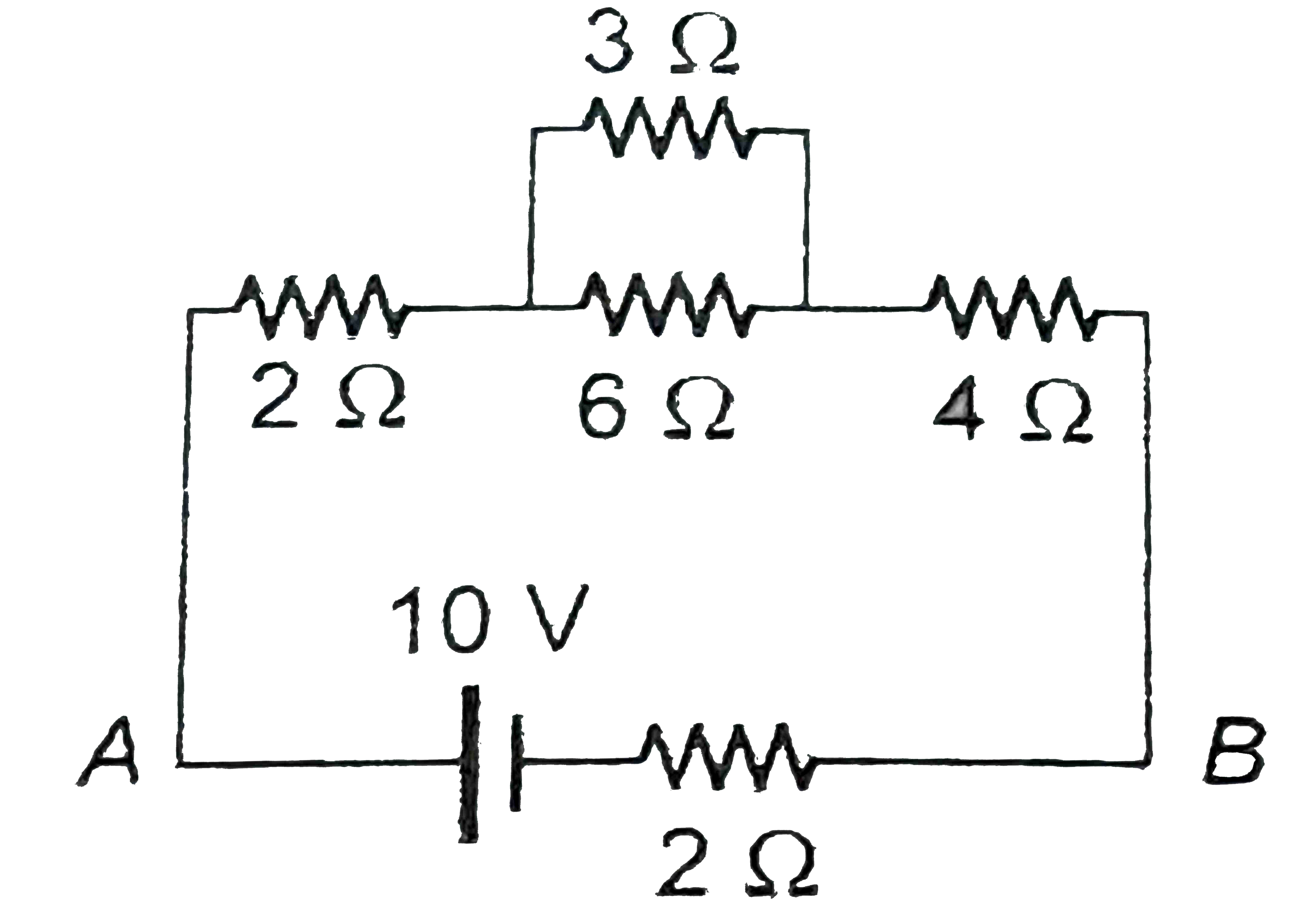
(b) Calculate the current flowing in the circuit and the potential difference across terminals of each cell.
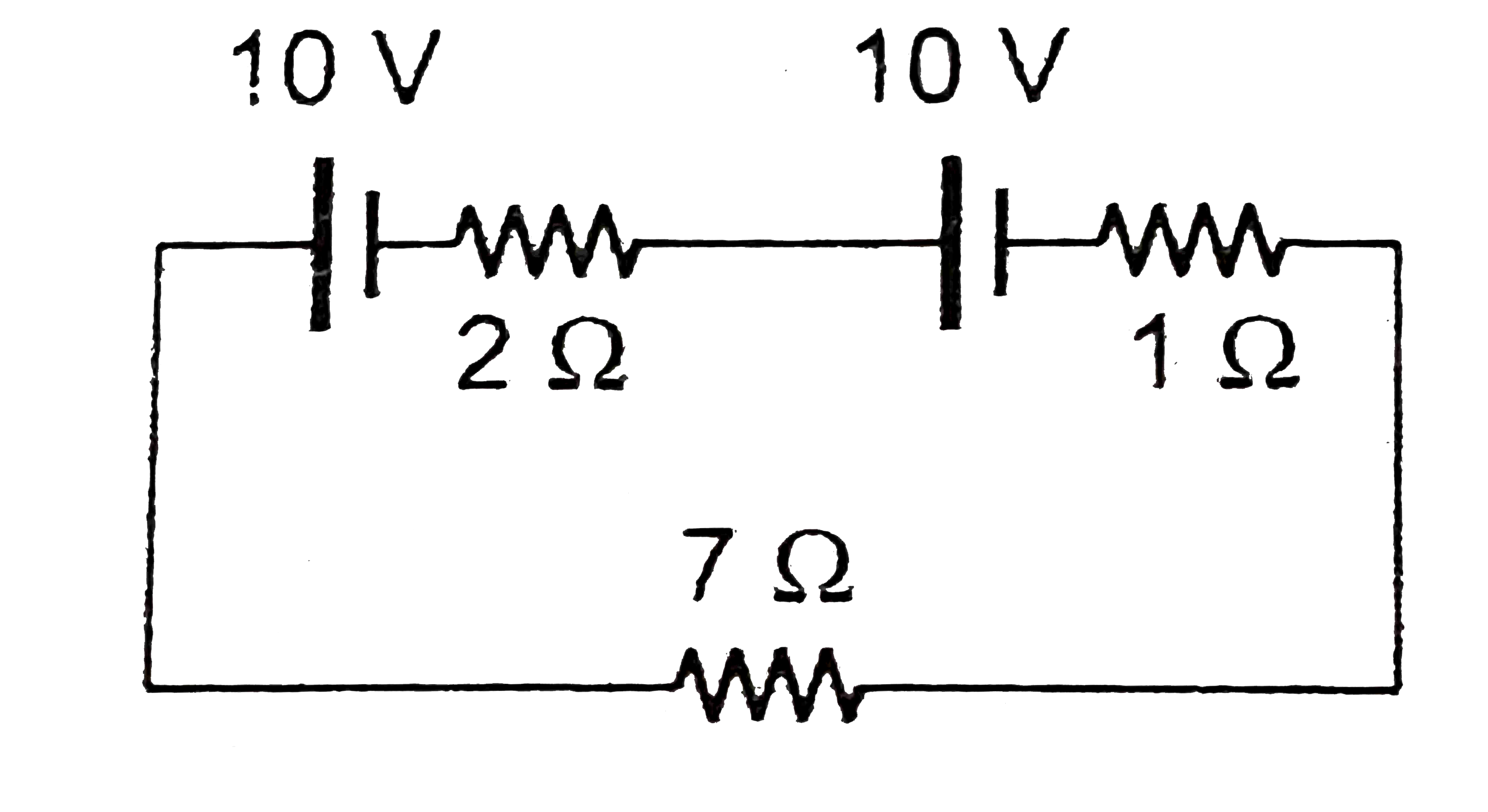
( c) Calculate the potential difference across terminals of each cell.
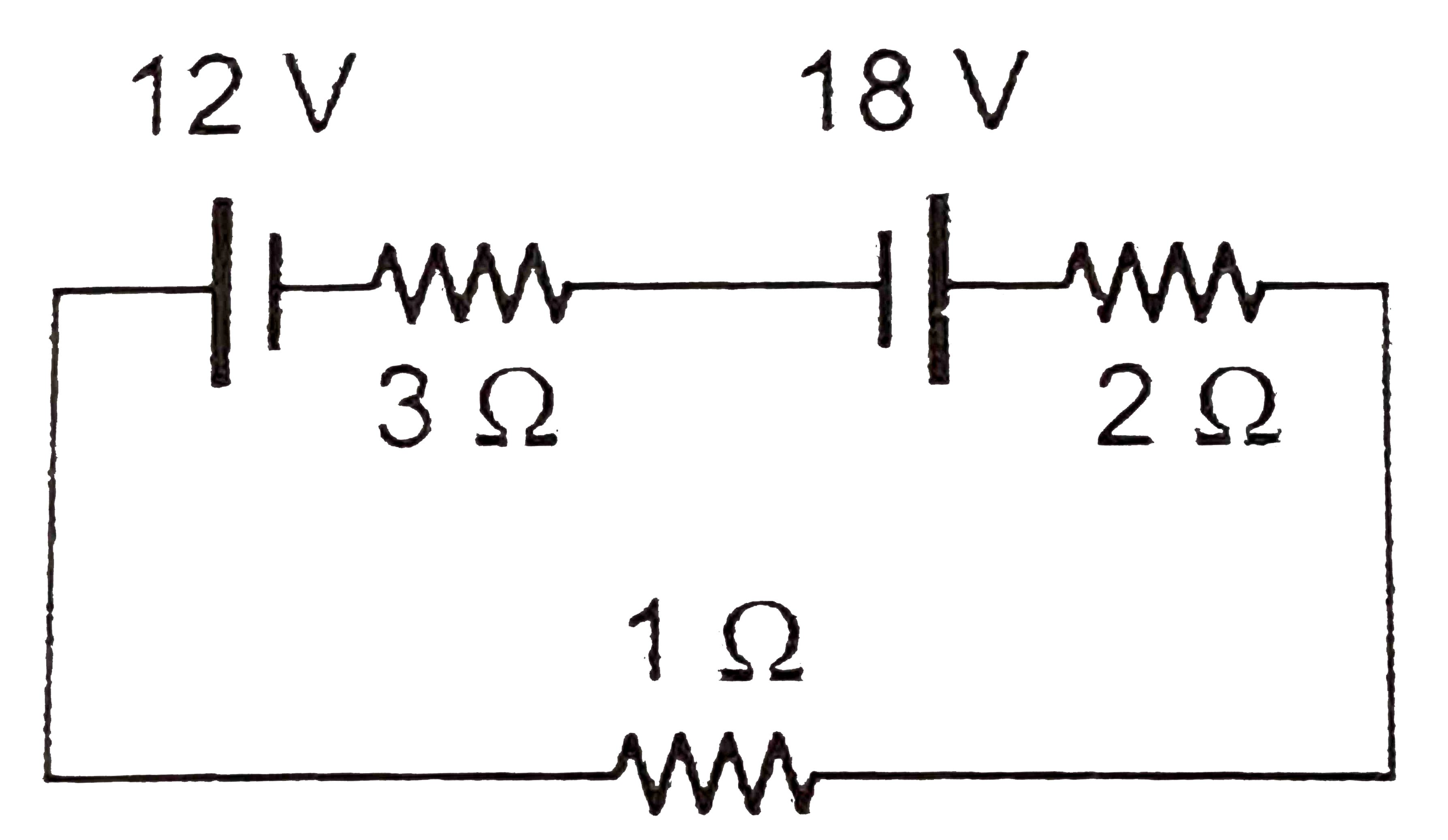
(d) Calculate the potential difference between A and B
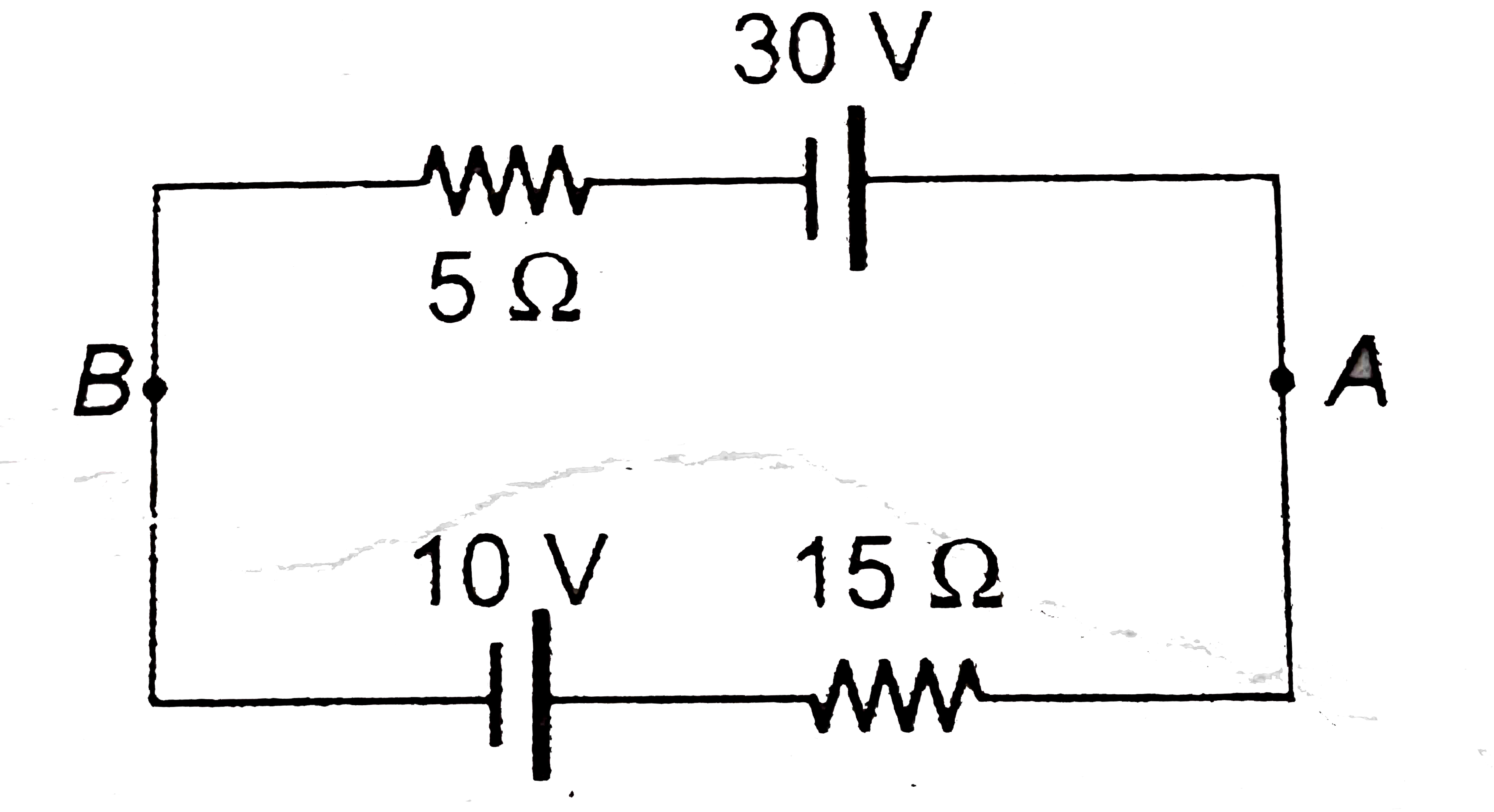
( e) Calculate the current in each resistor and terminal potential difference across each cell.

(f) Calculate potential difference across each cell.
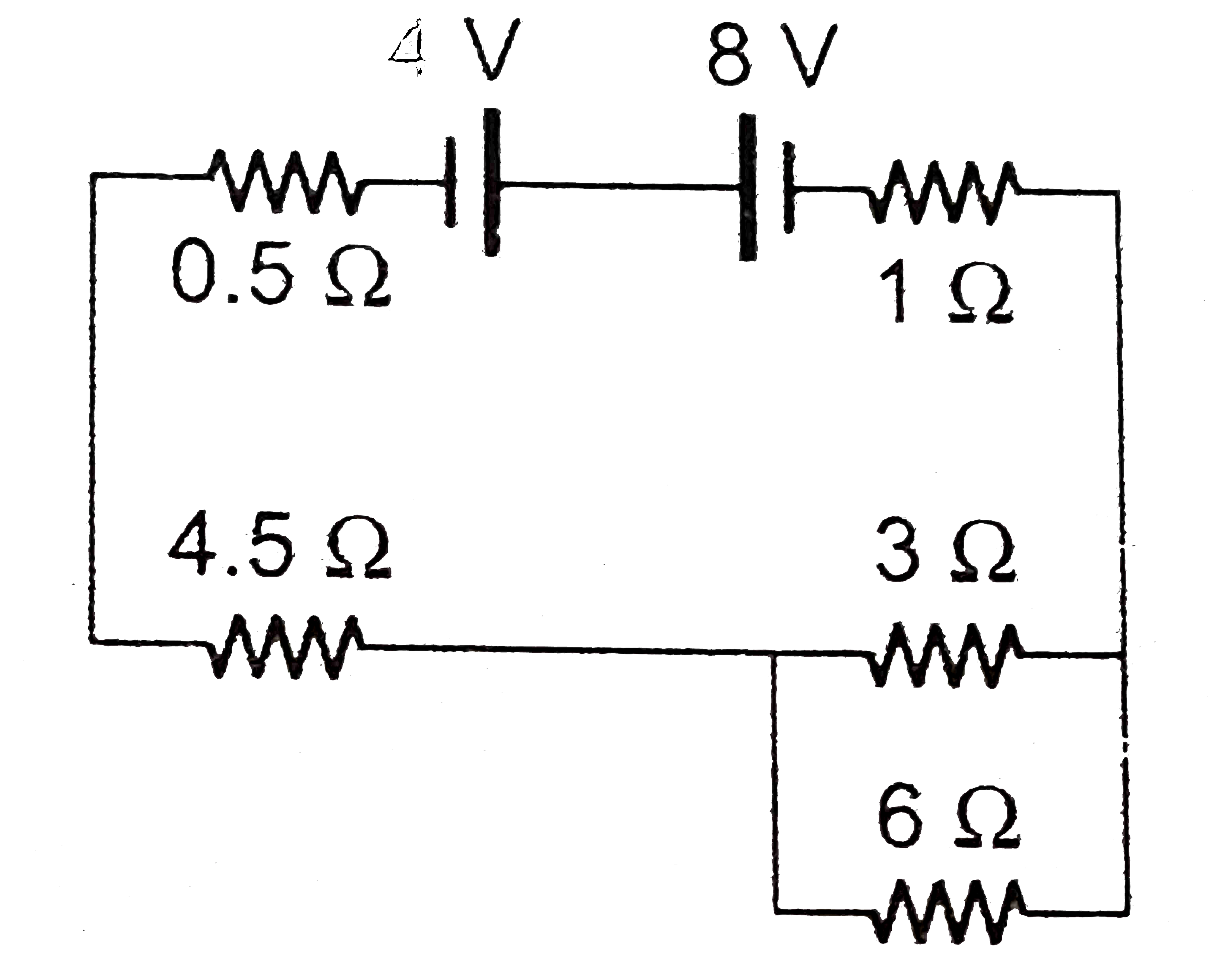
(g) A battery of 6 cells each of emf 2V and internal resistance 0.5Ω is being changed by DC mains of emf 220V by using an external resistance of 10Ω. Calculate.
(i) the charging current
(ii) the potential difference across the battery.
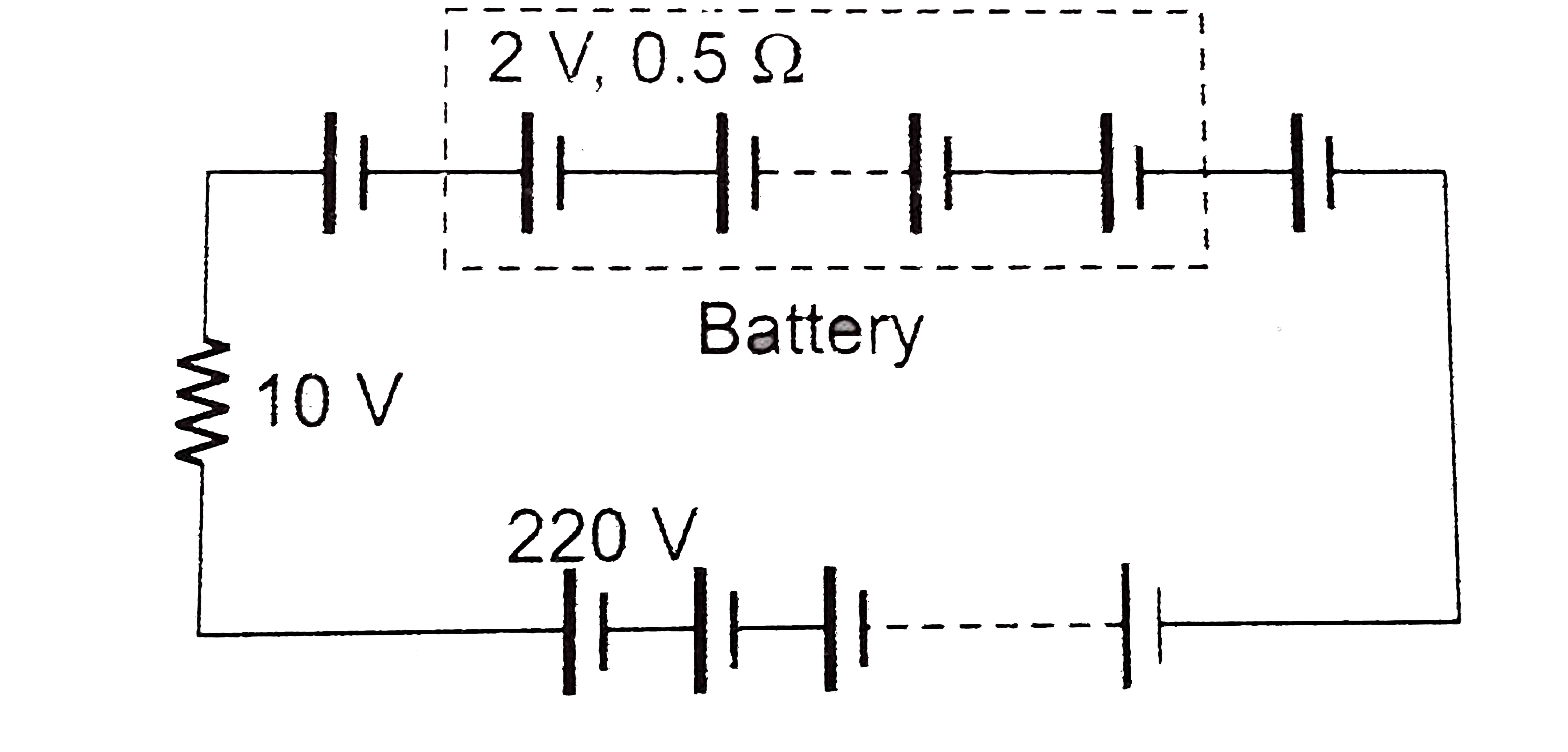 .View Solution
.View SolutionWhat is the relationship between potential difference across the terminals of a cell and emf of the cell ?
View Solution
Knowledge Check
- Question 1 - Select One
In the shown circuit, what is the potential difference across A and B
 A50 VB45 VC30 VD20 V
A50 VB45 VC30 VD20 V - Question 2 - Select One
The potential difference across the terminals of the cell in open circuit is called as
AcurrentBpot. diff. of cellCe.m.f. of cellDresistance - Question 3 - Select One
The terminal potential difference of a cell is greater than its emf when it is
Abeing dischargedBbeing chargedCin open circuitDshort circuited
What is the relationship between potential difference across the terminalsof a cell and emf of the cell?
View SolutionFind the potential difference across each cell and the rate of energy dissipated in R
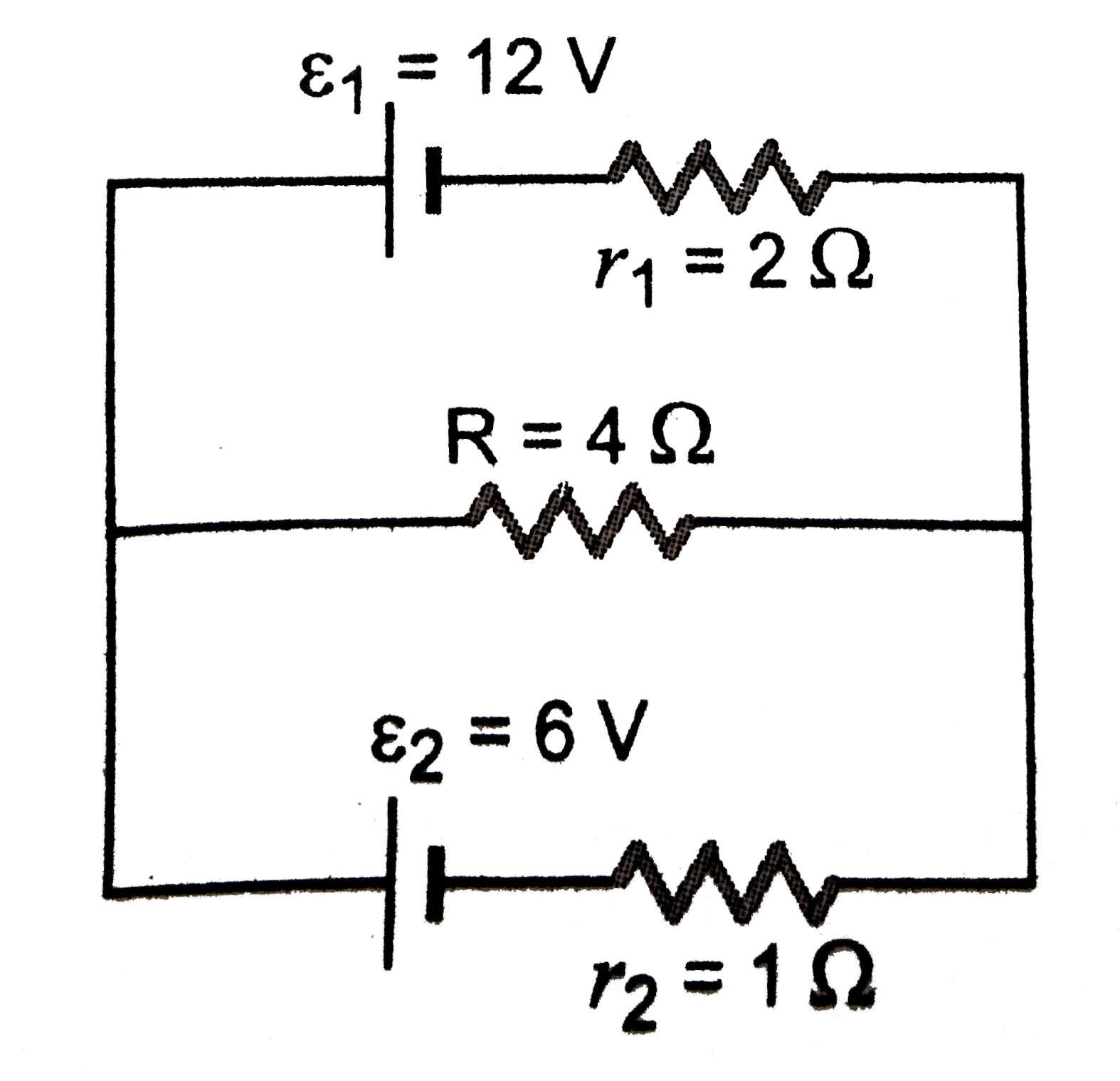 View Solution
View SolutionThree identical cells, each of emf 2V and internal resistance 0.2 ohm, are connected in series to an external resistor of 7.4 ohm. Calculate the current in the circuit and the terminal potential difference across an equivalent.
View SolutionCan the terminal potential difference of a cell exceed its e.m.f. ?
View SolutionWhat is the potential difference across resistor in the given circuit ?
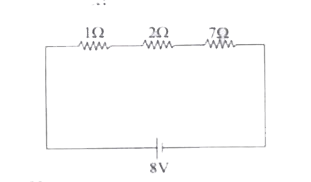 View Solution
View Solution

